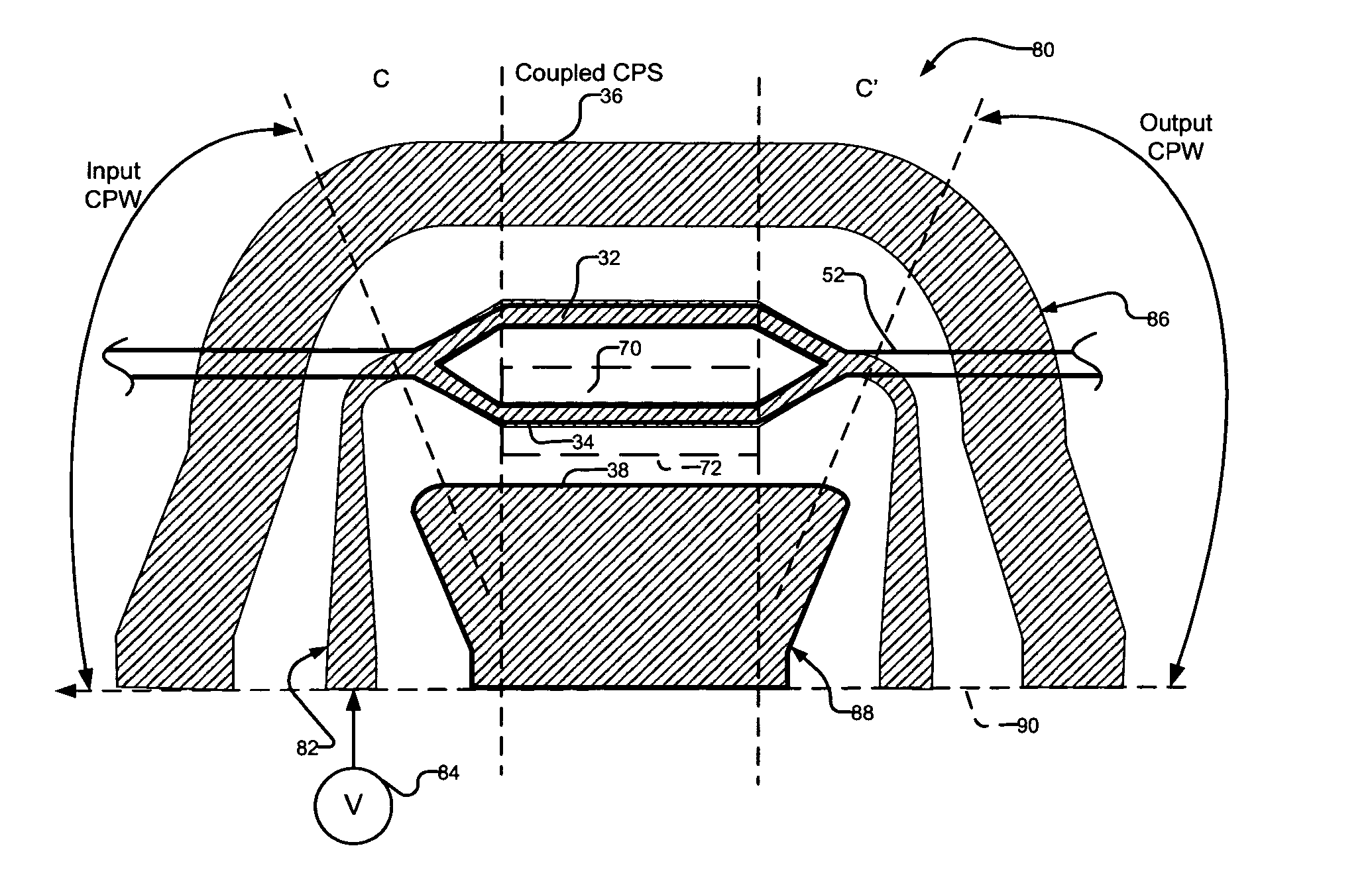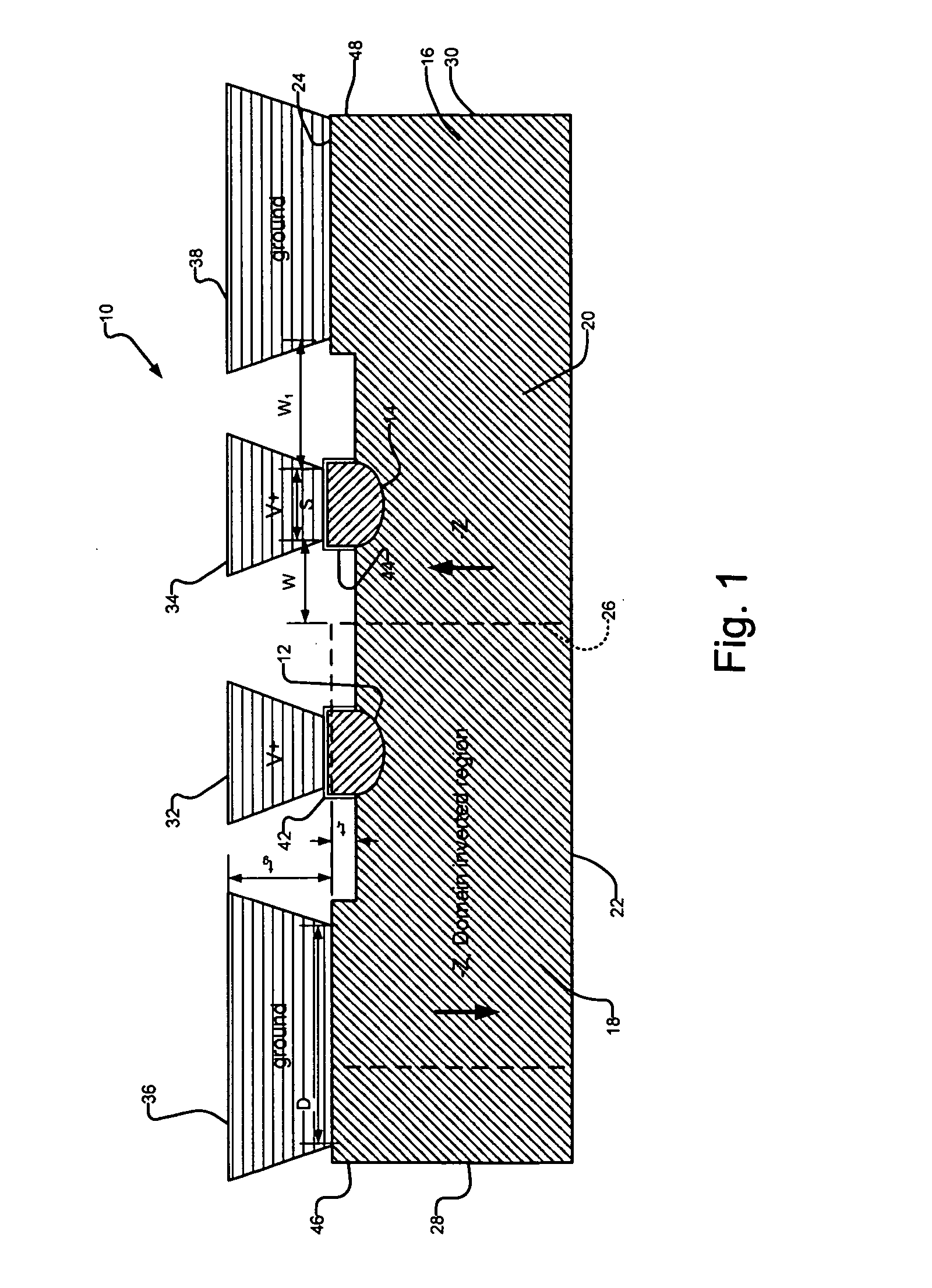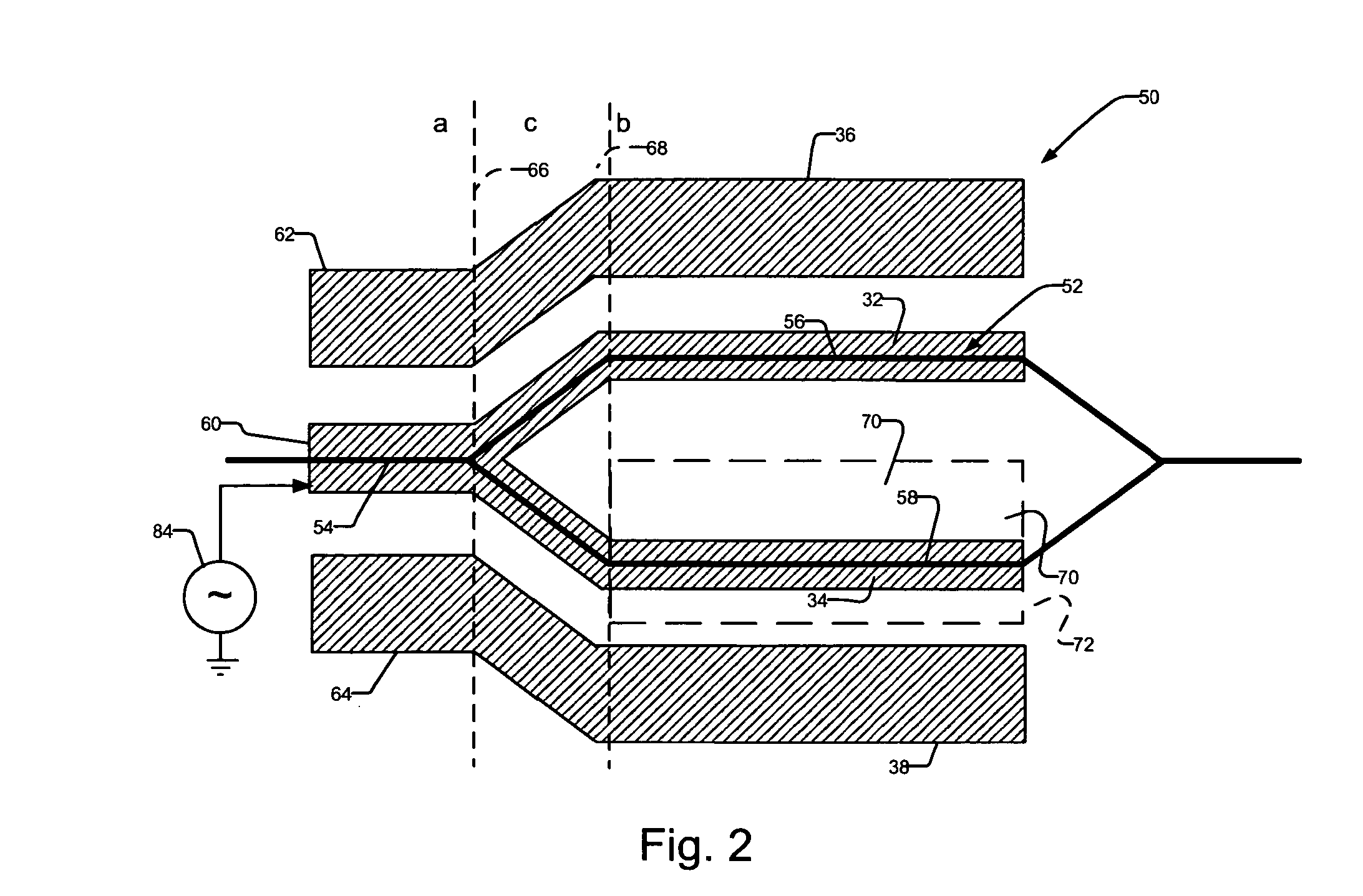Optical modulator with coupled coplanar strip electrode and domain inversion
an optical modulator and coplanar strip technology, applied in the field of optical modulators with coupled coplana, can solve the problems of uneven overlap efficiency between the two mzi waveguide arms, electrical confinement, etc., and achieve the effects of reducing voltage-length products, modest line impedance reduction, and improving performan
- Summary
- Abstract
- Description
- Claims
- Application Information
AI Technical Summary
Benefits of technology
Problems solved by technology
Method used
Image
Examples
Embodiment Construction
[0026] The invention is related to a modulator that includes an interferometer waveguide structure formed on an electro-optical substrate that has at least one domain inversion. Coupled electrodes extend, respectively, near a first and second arm of the interferometer waveguide structure.
[0027] Shown in FIG. 1 is a cross sectional view of modulator 10, which includes arms 12 and 14 of an interferometer waveguide structure, formed on substrate 16. The interferometer waveguide structure, for example a MZI, can be formed by techniques known in the art. For instance, a strip of titanium (Ti) metal can be deposited on an electro-optical blank. At high temperatures, Ti diffuses into the blank, forming the waveguide structure.
[0028] Generally, substrate 16 has a thickness in the range of from about 0.1 mm and about 1 mm. Preferably, it is formed of Z-cut LiNbO3. In a Z-cut substrate, the z (also called the c) crystal axis is normal to the substrate surfaces having the largest area. In ot...
PUM
 Login to View More
Login to View More Abstract
Description
Claims
Application Information
 Login to View More
Login to View More - R&D
- Intellectual Property
- Life Sciences
- Materials
- Tech Scout
- Unparalleled Data Quality
- Higher Quality Content
- 60% Fewer Hallucinations
Browse by: Latest US Patents, China's latest patents, Technical Efficacy Thesaurus, Application Domain, Technology Topic, Popular Technical Reports.
© 2025 PatSnap. All rights reserved.Legal|Privacy policy|Modern Slavery Act Transparency Statement|Sitemap|About US| Contact US: help@patsnap.com



